Rob Bignell's Blog, page 384
January 18, 2013
Market your book with endorsements
When  promoting your book, you always should have a website, send out press releases to bloggers and mainstream media, and arrange book readings/signings to ensure the title is properly promoted. But those aren’t the only things you can do. In fact, they may not be enough. One marketing effort you might want to consider is obtaining endoresements.
promoting your book, you always should have a website, send out press releases to bloggers and mainstream media, and arrange book readings/signings to ensure the title is properly promoted. But those aren’t the only things you can do. In fact, they may not be enough. One marketing effort you might want to consider is obtaining endoresements.
If you know experts in your profession – say astronauts if you’re writing about space travel or a recognizable novelist if writing fiction – ask them to read your book and write a line or two that can be quoted on the back of your book with the blurb. These endorsements also might be placed on your website. When a celebrity or expert endorses your book, it instantly gives it credibility among a number of readers. If you don’t know any such experts, send them a copy of your book and ask if they might consider writing a line or two about it that you would use in your publicity.
Need an editor? Having your book, business document or academic paper proofread or edited before submitting it can prove invaluable. In an economic climate where you face heavy competition, your writing needs a second eye to give you the edge. I can provide that second eye.
Related articles
 Write a winning blurb for your book's back cover
Write a winning blurb for your book's back cover Why writers need to carry business cards
Why writers need to carry business cards Why you want reviews written about your book
Why you want reviews written about your book Design a back cover that sells your book
Design a back cover that sells your book Do you need extra services a P.O.D. house offers?
Do you need extra services a P.O.D. house offers?
January 17, 2013
What is a story? An autopsy of a tale
What is a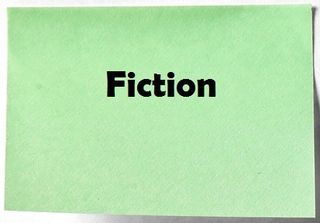 story? An idea or a setting or a character alone do not make a story. A fictional story is all of those and more.
story? An idea or a setting or a character alone do not make a story. A fictional story is all of those and more.
For the convenience of analysis and discussion, stories often are broken into parts. These parts typically are referred to as the five elements of fiction. They include:
n Plot - How the problem in the story is overcome, typically thought of as physical action
n Setting - Where and when this action occurs
n Character - Whoever attempts to solve the story’s problem as well as those who create the problem and those that appear incidentally
n Point of view - Perspective from which the story is narrated
n Theme - Purpose for which a story is told
It’s easy to think of the five elements of fiction as a matter of the 5 W’s and 1 H, or what, where, when who, why and how. Plot is what happens in the story. Setting is where and when the story happens. Character is who the story happens to. Point of view is how the story happens to be told. Theme is why the story happened to be told, or its message.
Each of these elements appears naturally in the story, whether you consciously intend them to or not. Consider the “Star Trek: The Next Generation” episode “The Best of Both Worlds”. The plot is about stopping a Borg invasion of the Federation. The setting is the 24th century (various stardates are given) in various star systems and aboard the starship enterprise and the invading Borg cube. The characters are the Enterprise’s crew, particularly Captain Jean-Luc Picard, Commander Will Riker and Lt. Cmdr. Shelby. The point of view largely is from an outside perspective, as if we were aboard the Enterprise. The theme is that individuality and self-determination triumphs over collectivism.
Virtually all of the problems with poorly written stories are that they in some way muddle one or more of these elements. In addition, you may perfectly nail each of these five elements but still tell the story poorly because it lacks flair; such problems are a matter of style, which is a part of understanding the craft of writing though not an element of fiction itself.
Need an editor? Having your book, business document or academic paper proofread or edited before submitting it can prove invaluable. In an economic climate where you face heavy competition, your writing needs a second eye to give you the edge. I can provide that second eye.
Related articles
 How to form your story's basic structure
How to form your story's basic structure Select a viewpoint that gives you flexibility
Select a viewpoint that gives you flexibility
Basic guidelines for self-publishing ebooks
About 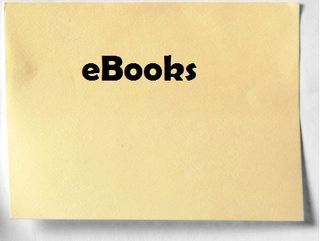 75 percent of all books these days are sold as ebooks – meaning they’re read on Kindles, Nooks, and other electronic readers rather than in paper form. As most writers are lovers of paper books, they often need reminding that they should self-publish their volume in ebook as well as paper form. Likewise, almost no one should limit their book purely to ebook sales.
75 percent of all books these days are sold as ebooks – meaning they’re read on Kindles, Nooks, and other electronic readers rather than in paper form. As most writers are lovers of paper books, they often need reminding that they should self-publish their volume in ebook as well as paper form. Likewise, almost no one should limit their book purely to ebook sales.
Developing the paper version of the book first then converting it to ebook form is traditional. This approach need not be followed, though. There is a lot of logic to going with the ebook first, as the paper version requires much more intensive formatting – such as adding page numbers, assigning typeface styles, and aligning margins (Indeed, because of this, most of this book focuses on self-publishing paper versions of your title, though much of what you do for a paper book, such as writing a cover blurb and designing a cover, are essential for an ebook.).
When creating your ebook, follow these basic guidelines:
n Strip it of styles – Other than using all caps and italics, typesetting styles used for chapter titles, section headers, drop caps and more can’t appear in most current ebooks. All wording should appear in one typeface and point size.
n Get rid of extra spacing – Your paperback version may place several lines of white space between chapter titles and the chapter’s first sentence, but that needs to disappear in your ebook. Single space your entire ebook.
n Dump tabs on paragraphs – Unlike a paper book, the first line of a paragraph isn’t indented. Like a business letter, all paragraph’s left margins are even or aligned. To indicate a new paragraph, an empty line is placed between paragraphs. This is done by hitting the ENTER key twice at the end of a paragraph.
n Delete page numbers – Page numbers are meaningless in ebooks as the reader can change the type size. That doesn’t mean you should dispense with the table of contents, though. Instead, each chapter or section title in the table of contents should be linked to where that chapter or section begins in the text. Indexes generally can be deleted, though.
When uploading an ebook to a specific self-publishing house, be sure to first read through their guidelines. Some have very specific rules and recommendations that will make your upload go much easier.
Need an editor? Having your book, business document or academic paper proofread or edited before submitting it can prove invaluable. In an economic climate where you face heavy competition, your writing needs a second eye to give you the edge. I can provide that second eye.
Related articles
 Always review proof your book before okaying it
Always review proof your book before okaying it
January 16, 2013
Get in gear with backup vs. back up vs. back-up
The next
time  you write one of these words, you may want to back up and see if you’ve got it right. Knowing which part of speech you’re using will prove helpful.
you write one of these words, you may want to back up and see if you’ve got it right. Knowing which part of speech you’re using will prove helpful.
“Backup” as a single a word with no space or hyphen can be used either as an adjective (When Johnson got knocked out, the coach put in his backup quarterback.) or as a noun (Noticing that the license plate matched that of a stolen vehicle, the policeman called for backup.).
“Back up” as two words with a space is a verb meaning to go in reverse (“Stop and back up, I think someone was in the alley,” the deputy said to his partner.).
Sometimes “back-up” with a hyphen appears as a replacement for “backup.” The hyphen is unnecessary, though, so back up and go with a single word.
Need an editor? Having your book, business document or academic paper proofread or edited before submitting it can prove invaluable. In an economic climate where you face heavy competition, your writing needs a second eye to give you the edge. I can provide that second eye.
Related articles
 When to use affect vs. effect
When to use affect vs. effect Improve writing's texture by avoiding repetition
Improve writing's texture by avoiding repetition
January 15, 2013
Story more profound with man vs. himself conflict
Perhaps 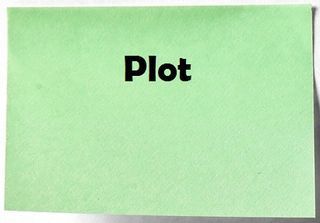 the most profound conflict a character can face is when he is at odds with himself. Conflicts in which the protagonist faces off against other individuals or society often result in characters that represent ideals and concepts. But the character that first must deal with his own foibles in order to overcome a villain or oppressive values has learned something. He has grown as a character and become a better human being. Ideally, your readers will grow with this character, making his triumph over others more lasting in the readers’ minds.
the most profound conflict a character can face is when he is at odds with himself. Conflicts in which the protagonist faces off against other individuals or society often result in characters that represent ideals and concepts. But the character that first must deal with his own foibles in order to overcome a villain or oppressive values has learned something. He has grown as a character and become a better human being. Ideally, your readers will grow with this character, making his triumph over others more lasting in the readers’ minds.
An example of man vs. himself conflict is Anakin Skywalker’s internal struggle in “Star Wars III: Revenge of the Sith” in which the young jedi must decide if he will serve the powers of good or turn to the Dark Side. In this case, Skywalker makes the wrong choices and becomes the villain Darth Vader.
If handled correctly, a man vs. himself conflict can raise a story to high art. The “Star Trek: The Original Series” episode “The City on the Edge of Forever” in which Captain Kirk must decide between his love for a woman and his responsibility to the future of humanity is modern tragedy. In Stanslaw Lem’s “Solaris”, a psychologist is reunited with what appears to be his wife but in reality is an amalgam of his memories of her. The result is an intense psychological struggle worthy of the best contemporary literature.
Arguably, your story gains sophistication when your main character must do overcome a challenge other than defeating the forces of nature or a straight villain. To survive being marooned on a desert world or succeed in taking down an alien menace, your main character ought to first have to overcome some internal conflict that in turn allows him to be victorious over nature or invader. For example, in Anne McCaffrey’s short story “The Smallest Dragonboy,” the main character Keevan must learn self-discipline and gain self-confidence to achieve his goal of becoming a dragonrider. In doing so, he overcomes the story’s wider challenge of being ridiculed by the other older and stronger boys.
Your story almost always is better when a man vs. himself conflict rests at its core.
Need an editor? Having your book, business document or academic paper proofread or edited before submitting it can prove invaluable. In an economic climate where you face heavy competition, your writing needs a second eye to give you the edge. I can provide that second eye.
Related articles
 Five great quotations about novel writing
Five great quotations about novel writing Conflict: The heart of every story
Conflict: The heart of every story How to form your story's basic structure
How to form your story's basic structure Select a viewpoint that gives you flexibility
Select a viewpoint that gives you flexibility Consider using man vs. nature conflict in your story
Consider using man vs. nature conflict in your story
Five Quotations about the Business of Writing
“Writing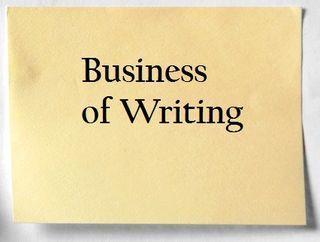 is the only profession where no one considers you ridiculous if you earn no money.” – Jules Renard
is the only profession where no one considers you ridiculous if you earn no money.” – Jules Renard
“There are three reasons for becoming a writer. The first is that you need the money; the second, that you have something to say that you think the world should know; and the third is that you can’t think what to do with the long winter evenings.” – Quentin Crisp
“You have to know how to accept rejection and reject acceptance.” – Ray Bradbury
“Beware of self-indulgence. The romance surrounding the writing profession carries several myths: that one must suffer in order to be creative; that one must be cantankerous and objectionable in order to be bright; that ego is paramount over skill; that one can rise to a level from which one can tell the reader to go to hell. These myths, if believed, can ruin you. If you believe you can make a living as a writer, you already have enough ego.” – David Brin
“It’s a dismally lonely business, writing.” – Toni Cade Bambara
Need an editor? Having your book, business document or academic paper proofread or edited before submitting it can prove invaluable. In an economic climate where you face heavy competition, your writing needs a second eye to give you the edge. I can provide that second eye.
Related articles
 Where to find reviewers for your book
Where to find reviewers for your book
Avoid giving readers a big info dump
An info 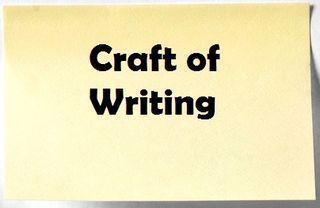 dump is a chunk of exposition that is insufficiently integrated into the story being told. It’s also known as an “expository lump” and is a specific kind of exposition.
dump is a chunk of exposition that is insufficiently integrated into the story being told. It’s also known as an “expository lump” and is a specific kind of exposition.
The info dump usually involves sharing your research notes with the reader, just to prove that you’ve done the research. While it’s sometimes necessary to give such information, make sure it sounds natural in your piece and not like a cut-and-paste from an encyclopedia.
Often an info dump is given by a Stapledon, a character serves no purpose other than to relate exposition, usually at great length and without interruption. As in real life, such characters are dull.
Another kind of info dumping is “maid-and-butler dialogue” in which characters tell each other things that they already should know so that the reader can overhear them. Unfortunately, those characters sound simple minded as the lines they deliver in real life would be inane.
Having said this, even the greatest writers are guilty of info dumping. Isaac Asimov is notorious for it in “The Foundation,” often regarded as one of the best novels in the science fiction genre. Frequently, however, these writers were allowed their transgression because the story the info dump itself was so fantastic (As a child, I had the same reaction to many encyclopedia articles that opened my eyes to the wider world). But with so many science fiction conventions that have appeared time and time again, your info dump probably isn’t all that fantastic. Given this, it’s best to avoid the info dump.
Need an editor? Having your book, business document or academic paper proofread or edited before submitting it can prove invaluable. In an economic climate where you face heavy competition, your writing needs a second eye to give you the edge. I can provide that second eye.
Related articles
 Avoid exposition (Show, don't tell!)
Avoid exposition (Show, don't tell!) How to make your writing show rather than tell
How to make your writing show rather than tell
January 14, 2013
Consider using man vs. nature conflict in story
When 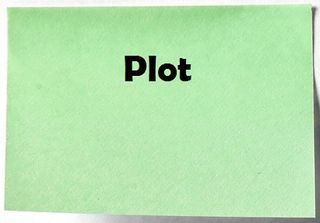 developing your story, you’ll want your characters to face a number of challenges or conflicts. One of the most basic of them is man vs. nature. In this conflict, the characters find their goals jeopardized by the natural forces of the universe: the cold of an ice age, dangerous plants and animals in an alien jungle, or the vacuum of space.
developing your story, you’ll want your characters to face a number of challenges or conflicts. One of the most basic of them is man vs. nature. In this conflict, the characters find their goals jeopardized by the natural forces of the universe: the cold of an ice age, dangerous plants and animals in an alien jungle, or the vacuum of space.
This conflict can truly test the characters’ stamina, and in a Darwinistic way, show who is the fittest. There’s virtually nothing that a character can do to change the weather or his environment, but he can through physical strength, willpower and intelligence survive it. Exactly how the character does survive – whether by forcing himself to stay awake for three days until he can march his out of the desert or by using his wits to kill a beast and sleeping in its belly to stay warm – says a lot about what characteristics the author values.
The man vs. nature conflict can takes on a thematic role in ecological disaster stories. A good example of this is Larry Niven’s novel "Legacy of Heorot." Set on a colony world, the story centers on how nature is “fighting back” against the ecological changes that the colonists have engendered. It examines the issues of what happens when humans interfere with the natural order of a world and if the notion of “protecting nature” is rational.
Need an editor? Having your book, business document or academic paper proofread or edited before submitting it can prove invaluable. In an economic climate where you face heavy competition, your writing needs a second eye to give you the edge. I can provide that second eye.
Related articles
 How to form your story's basic structure
How to form your story's basic structure Avoid exposition (Show, don't tell!)
Avoid exposition (Show, don't tell!) Conflict: The heart of every story
Conflict: The heart of every story
January 13, 2013
Editing client releases third SF book, 'Ace of Aces'
Chris 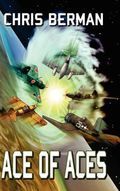 Berman, an editing client of mine for the past year, has released his third science fiction novel, “Aces of Aces.” Set on Earth in 2287, humanity is finally at peace. War has been banished by the science of genetics, tempering mankind’s violence but not our desire to explore the worlds of other suns. However, there are others among the stars who seek our destruction. Facing annihilation and without military leadership, those of the 23rd century must reach across the sea of time, plucking five World War II aces from the heat of battle, to train and lead the young and aggressive outcasts of humanity's Second Enlightenment in the art of aerial combat. Fact meets fiction in a story that weaves the biographies of five actual World War II pilots: Douglas Bader, of Great Britain; Gregory Boyington, of the United States; Adolf Galland, of Germany; Lydia Litvyak of the USSR; and Saburo Sakai of Japan. “Ace of Aces” is available at Amazon.com.
Berman, an editing client of mine for the past year, has released his third science fiction novel, “Aces of Aces.” Set on Earth in 2287, humanity is finally at peace. War has been banished by the science of genetics, tempering mankind’s violence but not our desire to explore the worlds of other suns. However, there are others among the stars who seek our destruction. Facing annihilation and without military leadership, those of the 23rd century must reach across the sea of time, plucking five World War II aces from the heat of battle, to train and lead the young and aggressive outcasts of humanity's Second Enlightenment in the art of aerial combat. Fact meets fiction in a story that weaves the biographies of five actual World War II pilots: Douglas Bader, of Great Britain; Gregory Boyington, of the United States; Adolf Galland, of Germany; Lydia Litvyak of the USSR; and Saburo Sakai of Japan. “Ace of Aces” is available at Amazon.com.
Need an editor? Having your book, business document or academic paper proofread or edited before submitting it can prove invaluable. In an economic climate where you face heavy competition, your writing needs a second eye to give you the edge. I can provide that second eye.
Related articles
 Promote book with Goodreads author's page
Promote book with Goodreads author's page
January 12, 2013
Five Great Quotations for Aspiring Writers
”Keep
writing. Keep doing it and doing it. Even in the moments when it's so hurtful to think about writing.” – Heather Armstrong
“Inspiration is wonderful when it happens, but the writer must develop an approach for the rest of the time... The wait is simply too long.” – Leonard Bernstein
“I take the view, and always have, that if you cannot say what you are going to say in twenty minutes you ought to go away and write a book about it.” – Lord Brabazon
“You must keep sending work out; you must never let a manuscript do nothing but eat its head off in a drawer. You send that work out again and again, while you're working on another one. If you have talent, you will receive some measure of success – but only if you persist.” – Isaac Asimov
“No letter from a lover is ever more welcome, brings more joy, than a publisher's expression of interest does to a new author!” – Judith Brocklehurst
Need an editor? Having your book, business document or academic paper proofread or edited before submitting it can prove invaluable. In an economic climate where you face heavy competition, your writing needs a second eye to give you the edge. I can provide that second eye.
Related articles
 Write a winning blurb for your book's back cover
Write a winning blurb for your book's back cover Five great quotations about novel writing
Five great quotations about novel writing Avoid exposition (Show, don't tell!)
Avoid exposition (Show, don't tell!) Where to find reviewers for your book
Where to find reviewers for your book



